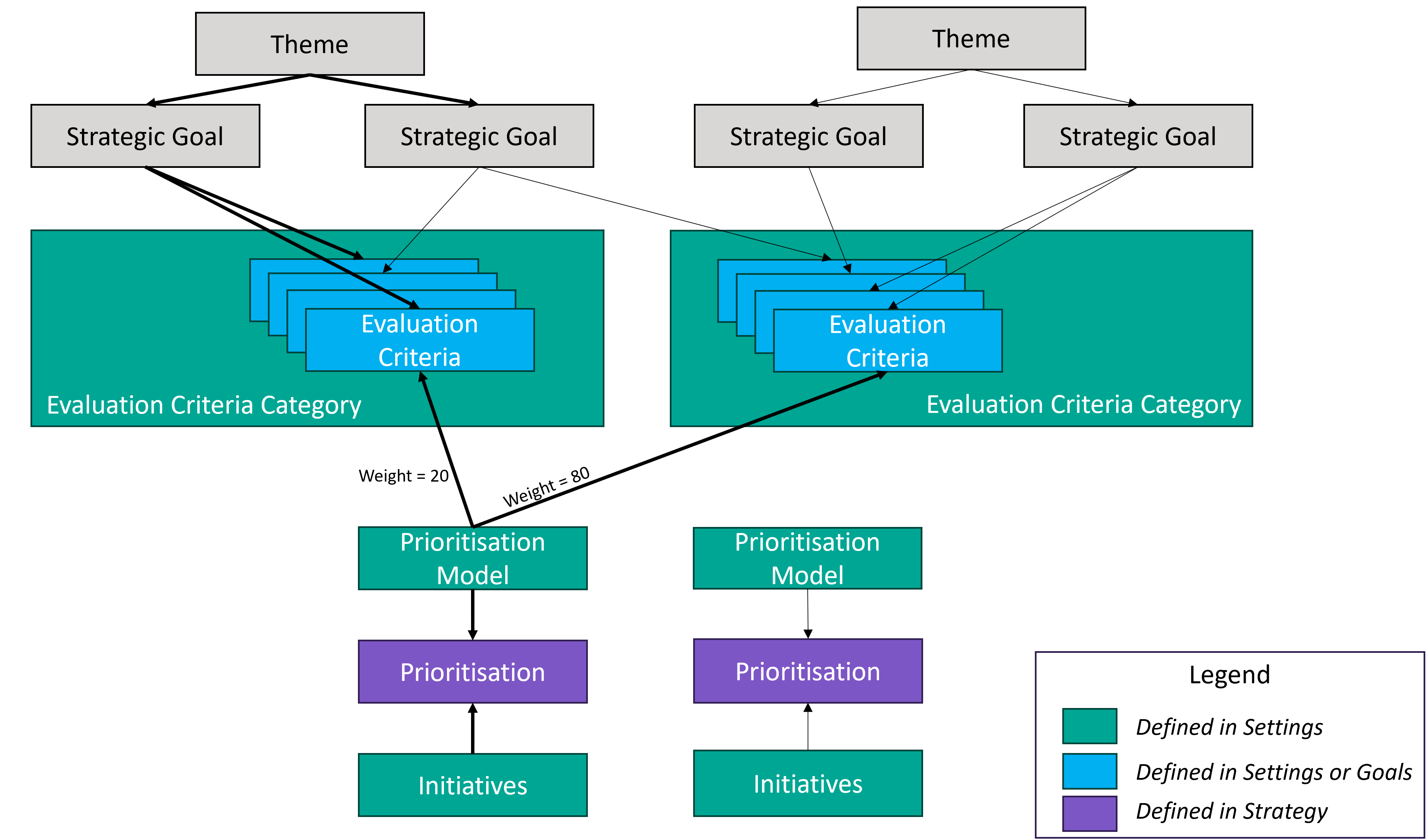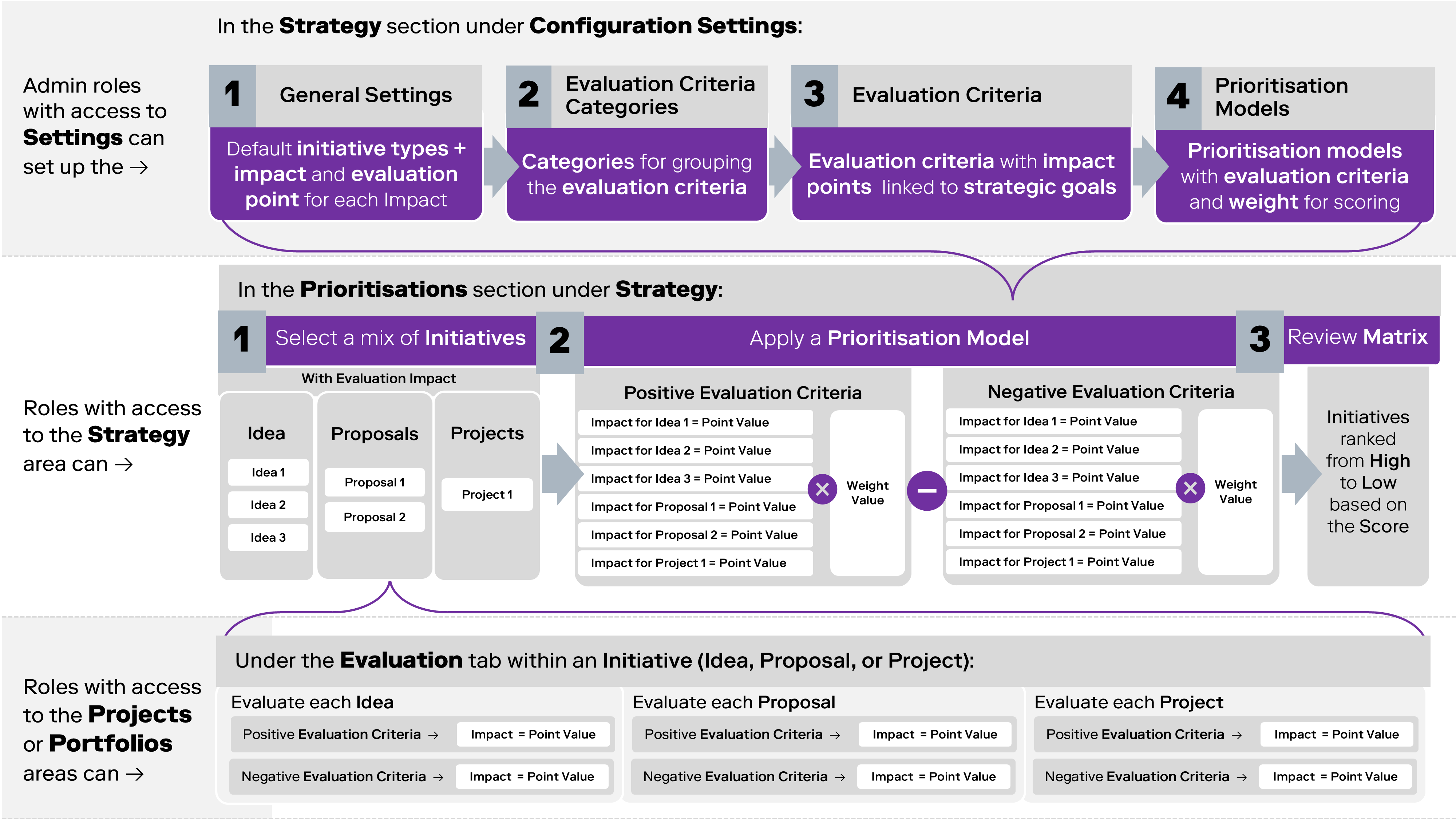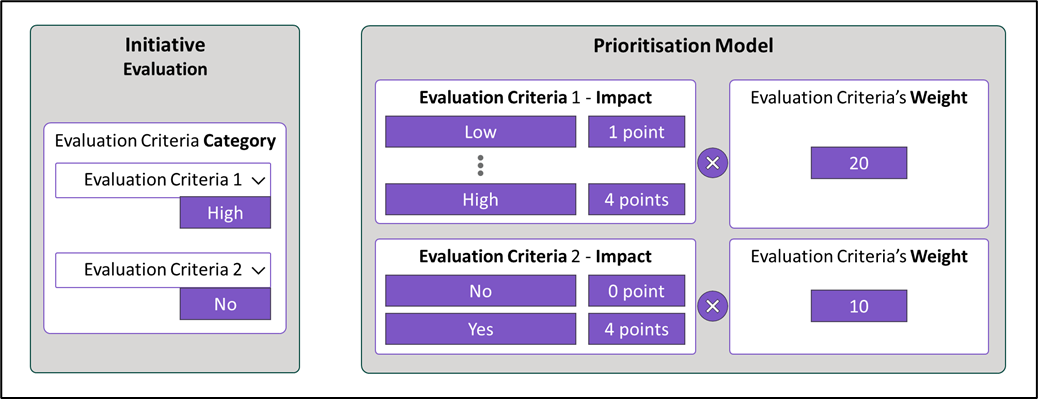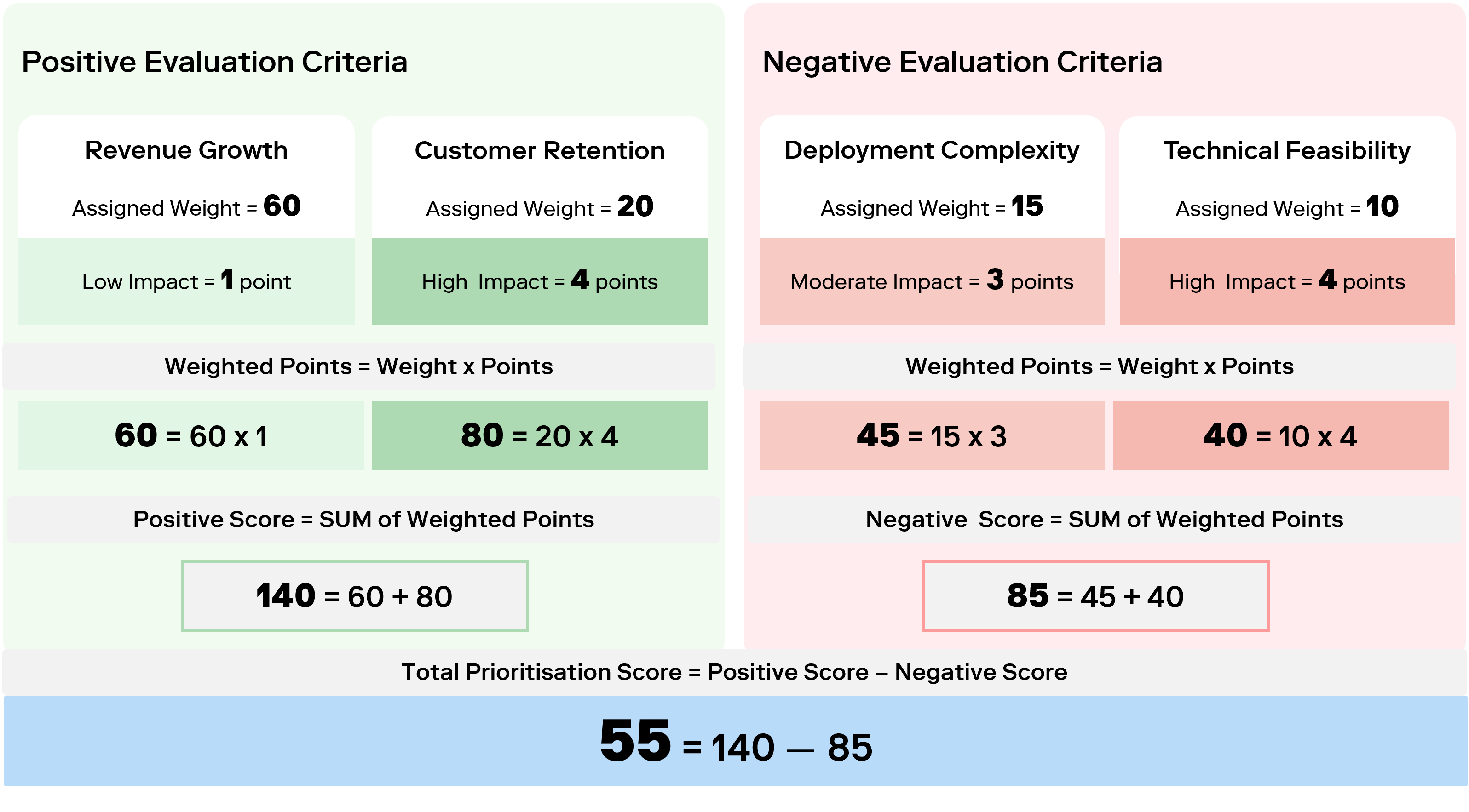Describe the requirements for the prioritisation process
What is Prioritisation?
The Prioritisation module of Strategic Planning allows you to prioritise any initiative (Programs, Project, Proposals, Ideas).
This module helps your organisation focus on the right initiatives that align with your strategic goals, ultimately driving better business outcomes.
An overview of the terms and how Prioritisation works:

The prioritisation module is available for Strategic users to prioritise upcoming work. To do so, a user will have to use a Prioritisation which is composed of the following elements:
- Initiatives: Upcoming and in-flight projects, proposals, and ideas.
- Prioritisation Model: defines how the prioritisation score is calculated based on initiatives evaluation. A prioritisation model is defined by a set of weighted evaluation criteria. An Evaluation Criteria can be created/edited from Settings, or Goal.
How it is implemented.
Glossary
Here is an overview of the terms defined below:

Initiatives
An Initiative is a work item you want to prioritise and plan. By default, an initiative can be an idea, a proposal or a project. This is defined in the General Settings of the Strategy. Refer to the setting section for more information.
Prioritisation model
A Prioritisation Model is the key element that will allow strategic users to prioritise the initiatives against each other. A prioritisation model should reflect a reasoning as to why we are prioritising an initiative over another one. A prioritisation model should derive from the strategic goals (due to its Evaluation Criteria) to ensure that the business focuses on and prioritises the right work.
Evaluation Criteria and Evaluation Criteria Category
To allow a prioritisation model to map to strategic goals, we are using Evaluation Criteria. Evaluation Criteria are forces that influence your decision-making and stem from a strategic goal.
Evaluation criteria can have a positive or negative impact towards a goal (and so on the prioritisation score).
Example1:
- Goal: Keep the churn rate to 2% this current year
- Evaluation Criteria: Customer Retention (positive impact)
- Theme: Customer
Example 2:
- Goal: Deploy 2 new digital projects advancing productivity this current year
- Evaluation Criteria: IT Complexity (negative impact)
- Theme: Digital Transformation
Evaluation Criteria are grouped into Categories. The grouping displays Evaluation Criteria together in the Initiative Evaluation view.
Evaluation Impacts
Each Evaluation criterion is composed of a list of Evaluation Impacts.
Each Evaluation Impact has:
- A meaningful name that shows in the drop-downs to evaluate an initiative against an evaluation criteria.
- Points that will be used in the Prioritisation Score.
- A statement to explain to the user what the evaluation impact means and when to select it.
Each evaluation criterion can be evaluated differently. The definition of an evaluation criteria is very flexible. This means that you can have the following 3 evaluation criteria for instance:

Prioritisation Score
The Prioritisation Score is the calculated score based on the evaluation criteria values of the initiative and the prioritisation model selected.
Below is an example of how a prioritisation score is calculated:
Prioritisation Score = SUM (Positive Evaluation Criteria Weighted Points) - SUM (Negative Evaluation Criteria Weighted Points)
Example:
Prioritisation Planning
Before you start using Altus Prioritisation and setting it up, you will need to do the following thinking:
- Reflect on the Evaluation Criteria you want to track (for your organisation or department). How would they relate to the Strategic Goals?
- Reflect on when you would want to use prioritisation and strategic planning. Is it for Ideas? Proposals? Projects? What types of entities do you want to compare against each other?
- Reflect on the prioritisation model. Would you want a unique prioritisation model for the whole organisation (using Altus) or multiple prioritisation models? If it’s your first prioritisation model implementation in your company, we suggest you start with a department and trial prioritisation.
- Finally, reflect on the point system you want to set in place, and the maximum points per evaluation criteria (to standardise the evaluation impact points).
We suggest that you try the prioritisation first with different settings. Remember that, as soon as you start using a prioritisation model, changing it will impact all prioritisation using it and therefore will impact priorities that may have been discussed or agreed before any change.
Make sure you try the prioritisation, and once you agree with the governance on the prioritisation model to use (evaluation criteria, points, weights etc.), make it official and available by activating it.
There are technical aspects of the system that your administrator will need to be set up before you can begin creating your first Prioritisation Model. These details can be found here.

